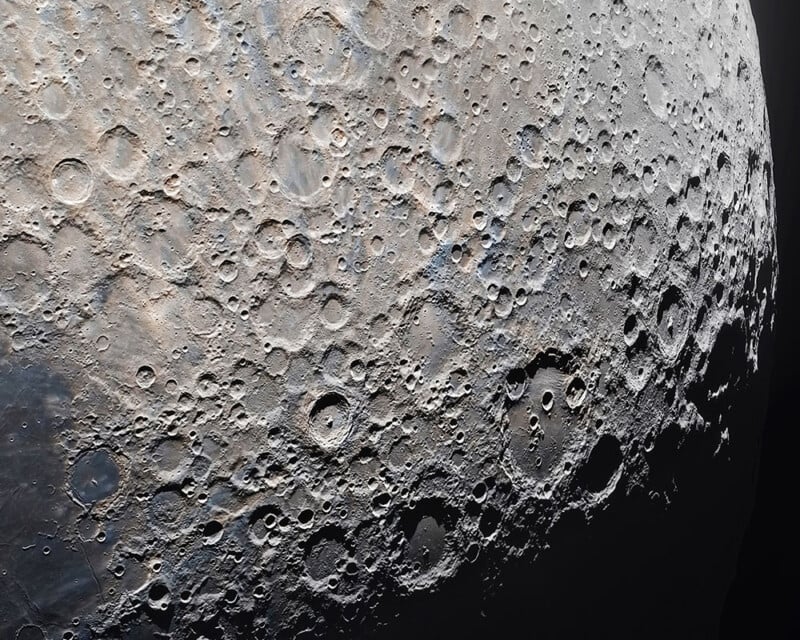Photographer’s Incredible ‘GigaMoon’ Image is Made From 280,000 Photos
![]()
Astrophotographer Andrew McCarthy has captured a “GigaMoon” — a 1.3-gigapixel highly-detailed image of the Moon made from 280,000 photos.
It’s an image that McCarthy has wanted to capture for a long time, with multiple attempts thwarted by poor conditions.
“My hard drive is filled with dozens of failed attempts at GigaMoon,” he tells PetaPixel. “I watch the forecast for seeing conditions daily. This is a particular aspect of weather not visible in most forecasts, it requires a specific astronomy-oriented weather app (I use Astrospheric) to keep me abreast of the ever-changing conditions of the upper atmosphere.”
McCarthy used an 11-inch telescope with a 2.5x powermate which ultimately gave him a focal length of 7000mm, variances in temperature between atmospheric layers can cause the Moon to look blurry and shaky when viewed through that kind of magnification.

But on the evening of April 29, the forecast was good so McCarthy decided to take another crack at it.
“Even with good conditions, it’s almost like capturing through water with how much the atmosphere distorts each image,” he explains.
“For that reason, I capture about 2,000 images at a time. Doing this on each section, then slewing my telescope and doing it again and again eventually covering the full moon is how these images are captured.”
![]()
Despite having relatively good conditions, there were still phases when it was less than optimal so McCarthy shot the entire Moon twice to try and cover for any bad panels. Eventually, he captured 140 panels meaning he shot a staggering 280,000 images.
Editing the GigaMoon
“Since my camera used for this was monochrome, I still had to capture color,” he says.
“For that, I used my 12-inch Newtonian telescope equipped with a full-frame CMOS camera. While it was monochrome as well, it has a filter wheel, allowing me to cycle through red, green, and blue filters during capture to get high-quality color data I could add to the final image.”
Capturing all of the data required is a difficult task, but then assembling it into a coherent final image is a further complicated task — one that requires a lot of computer power.
Manually aligning each panel of a huge moon pic is a pain but it must be done for the best outcome. Sometimes I spend an entire day just getting this part right. It also gives me an intimate look at each panel, so I know which ones need to be reprocessed with different settings. pic.twitter.com/XGNJztn1TJ
— Andrew McCarthy (@AJamesMcCarthy) April 30, 2023
“I incorporated ‘drizzle’ to my images, meaning I had software interpolate data between the pixels to produce an upscaled image from the image stack, which took several days to complete,” McCarthy explains.
“Once this was done, the entire thing was stitched together by hand in Photoshop. It was done by hand to both help me look for bad panels and make minute adjustments to panel orientation to account for ‘libration’ — the subtle angle change of the moon that occurred during capture.”
![]()
After several days of assembling the image, to make the editing tweaks that terrestrial photographers are more familiar with — such as composition, contrast, and color — McCarthy had to cut the image into pieces so that his computer could handle the memory requirement.
“Overall, the image was cut into pieces and reassembled 10-15 times over the last week as I made these relatively small edits, to ensure the final product looked flawless as a whole, and when zoomed onto the surface,” he says.
McCarthy says his computer crashed “at least a dozen times” while completing the GigaMoon. To view the full 1.3-gigapixel image head to this link here. To purchase a fine art print of the image head to McCarthy’s website. The full image can be downloaded from McCarthy’s Patreon.
More of McCarthy’s work can be found on his Instagram, Twitter, and website.
Image credits: All photos by Andrew McCarthy.